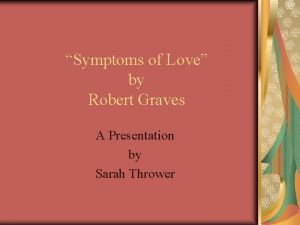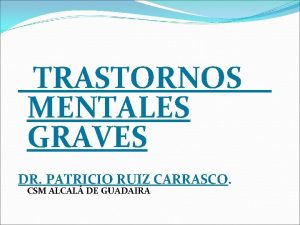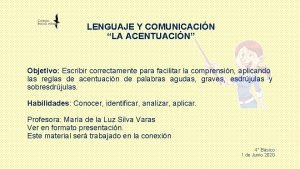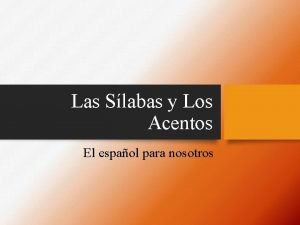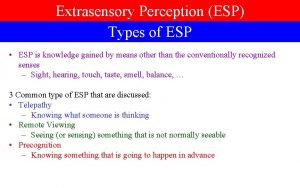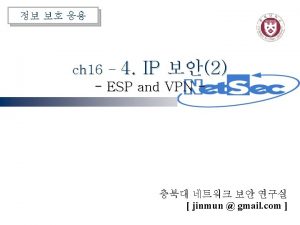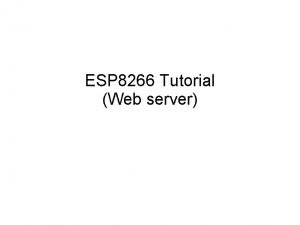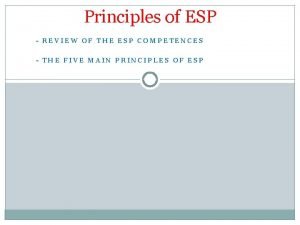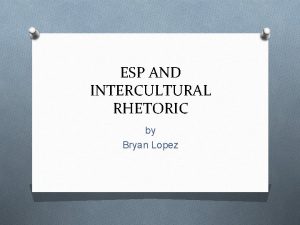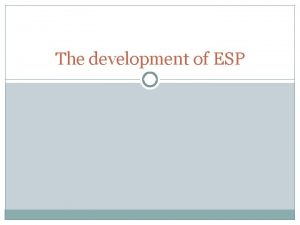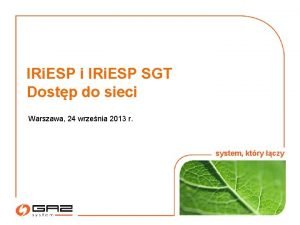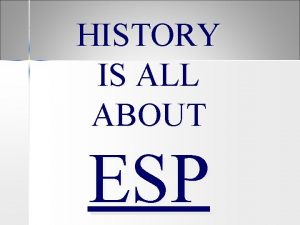Needs Analysis in ESP NA Definition Graves 2000













- Slides: 13

Needs Analysis in ESP

NA Definition • Graves (2000) notes that NA is a systematic and ongoing process of gathering information about students’ needs and interpreting the information in order to have an effective course to meet the needs. • Richards (2001, p. 51) defines the term NA as: ‘procedures used to collect information about learners’ needs. ’ • NA is a the starting point in the course design process in which different data will be gathered to help the practitioner to decide about the course focus, content in terms of language , skills and methodology.

Types of Needs • Hutchinson and Waters (1987) state that it covers two types, namely: Target Needs and Learning Needs. 1. Target Needs • Target needs denote what the learners need to do in the target situation; i. e. , what they have to be able to do at the end of their language course. Accordingly, needs “are perhaps more appropriately described as “objectives. ” (Robinson, 1991, p. 7). According to Hutchinson and Waters (1987, p. 55), the term “target needs” is broken down into: Necessities, Lacks, and Wants.

Target Needs: a. Necessities refer to “the type of need determined by the demands of the target situation”. They are also named “Objective Needs” (Jordan, 1997, p. 25). b. Lacks refer to what the learners do not know or cannot do in English. According to Jordan 1(997), lacks are defined as the gap between the existing language proficiency of the learners and the one required at the end of the language course. c. Wants are referred as ‘Subjective Needs’ which are related to learners’ motivation, readiness and attitudes to learn.

Learning Needs • Robinson (1991, p. 7) defines learning needs as “…what the learner needs to do to actually acquire the language. ” In the same vein, Hutchinson & Waters (1987) stress the fact that a relevant needs analysis must take into consideration not only the target situation needs where the question “What the learners need to learn” is central, but also the learning needs, that is, “How the learners will learn”. • Learning needs analysis looks for information about: the learners, their learning styles and strategies, language skills, selection of teaching materials, the setting and the time load.

Role of NA • Richards (2001, p. 52) considers NA as ‘fundamental’ to the planning of language courses and in language teaching it serves different purposes which enable: • To find out what language skills a learner needs in order to perform a particular role, such as sales manager, tour guide, or university student. • To help determine if an existing course adequately addresses the needs of potential students. • To determine which students from a group are most in need of training in particular language skills. • To identify a gap between what students are able to do and what they need to be able to do. • To collect information about a particular problem learners are experiencing.

TYPES OF ANALYSES 1. Target Situation Analysis (TSA) The notion, "target need" is the "product" of a Target Situation Analysis (TSA). The latter was first introduced by Chambers (1980, p. 29), who defines TSA as “communication in the target situation. ” According to West (1994), TSA is a form of Needs Analysis, which stresses on identifying the learners’ language requirement in the occupational or academic situation they are being prepared for; some questions of TSA: Why is the language needed? How will the language be used? What will the content areas be? Who will the learner use the language with? Where will the language be used? When will the language be used?

2. Present-Situation Analysis • The term Present Situation Analysis (PSA) was first coined by Richterich and Chancerel (1980). Unlike TSA, PSA ascertains the students’ state of language development at the beginning of the language course. • The sources of information are: learners themselves, the teaching establishment and the ‘user institution’. Dudley-Evans and St John (1998, p. 125) state that PSA "estimates strengths and weaknesses in language skills and learning experience". • Broadly speaking, “present situation analysis” addresses two aspects: “lacks” and “wants” (Hutchinson & Waters, 1987).

• Learning Situation Analysis • Hutchinson and Waters’ definition (1987) of wants (perceived or subjective needs of learners) corresponds to learning needs. • Similar to the process used for target needs analysis, they suggest a framework for analyzing learning needs which consists of several questions, each divided into more detailed questions. The framework proposed by Hutchinson and Waters (1987) for analysis of learning needs is the following: • 1. Why are the learners taking the course? • 2. How do the learners learn? • 3. What sources are available? . • 4. Who are the learners? • 5. when /where does the course take place?


NA Procedure • Brown (2009) who explains the stages of a Needs Analysis. His framework consists of three major stages with ten steps: • A. Get ready to do NA • 1. Define the purpose of the NA 2. Delimit the student population • 3. Decide upon approach (es) and syllabus (es) 4. Recognize constraints • 5. Select data collection procedures • B. Do the NA research • 6. Collect data 7. Analyse data 8. Interpret results • C. Use the NA results • 9. Determine objectives 10. Evaluate the report on the NA project • From the overall findings of the analysis, the researcher attempts to draw implications about the learners' language needs, and finally explains the limitations of the study.

NA Sources and Methods

 Target situation analysis in esp
Target situation analysis in esp Symptoms of love poem questions and answers
Symptoms of love poem questions and answers Primary needs and secondary needs
Primary needs and secondary needs Satisfaction
Satisfaction Primary needs and secondary needs
Primary needs and secondary needs Strategic gender needs and practical gender needs
Strategic gender needs and practical gender needs John graves scenic riverway
John graves scenic riverway Propitozis
Propitozis Csm graves
Csm graves Codigo penal espaol
Codigo penal espaol Repiteselo
Repiteselo Ridículo es aguda grave o esdrújula
Ridículo es aguda grave o esdrújula Suppuko
Suppuko Graves orbitopathy
Graves orbitopathy

